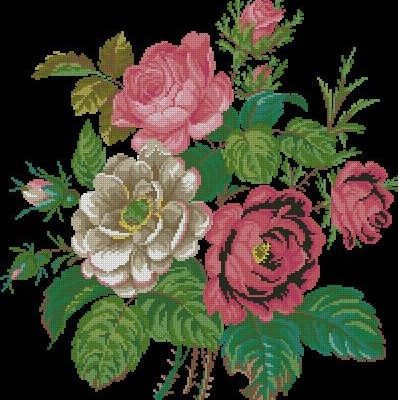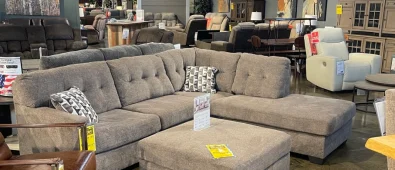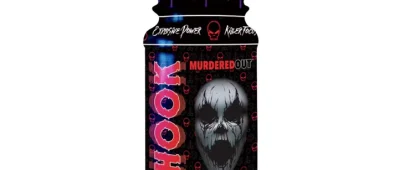Cross-stitching is a craft that has existed for many years. Many people are intrigued by the idea but don’t know where to begin. What tools are you going to need? Do you need special thread? It is technically embroidery? What does 11 CT stand for? We have listed 8 important things about cross stitching that you should know before you start to make sure your success.
- Cross-Stitch vs Needle Point vs Embroidering
These three techniques are often combined by many people. Although cross stitch pattern maker, needlepoint, and embroidery are all closely related, each one has its own distinct characteristics.
There are two ways to embroider: by hand or by machine. Machine embroidery, which is more professional and takes less time and effort to create designs from fabric that has been generated by a computer, is used more frequently. If the fabric is thick enough, embroidery machines can be used to make items like jackets, tote bags and quilts. Hand embroidery is more intricate. Hand embroidery is more an art form. You can use a needle to make designs on fabric.
Needle point is a form of surface embroidery that covers the top of fabric. Needle Point is a square-bysquare design. The tent stitch is the most common stitch used in needlepoint. The tent stitch is a diagonal stitch which expands at a 45 degree angle. Needlepoint works best with sturdy objects like pillows, rugs, and purses.
Cross-Stitch, a form of hand embroidery that is very popular in counted thread embroidery, is a type. Cross-stitching is an ancient form of embroidery. Cross-stitching uses X-shaped stitching within a tiled pattern to create an impression. It can look less smooth, a bit more boxy and jagged. These X-shaped stitches can be used on fabrics with an even or open weave such as linen or Aida. The fabric can also be stretched across a hooped. To ensure an even final image, counted cross-stitch uses the stitch count from the center of each fabric. Stamped cross stitch is made by printing a pattern on the fabric and using this stencil to create the design.
- What essential tools do you need to cross-stitch?
You may now be curious about what you should do to start your cross-stitch journey. Pick your fabric first. Aida, 100% cotton is the best fabric for cross-stitching. Aida cloth is an excellent choice for beginners because of its wide weaves, which make it easy to see the holes.
What thread should you choose? Embroidery thread, also known as floss in the U.S., is made of 100% Egyptian cotton. You can also choose from a wide range of colors. DMC is the most well-known brand of embroidery thread. They are silky and very attractive. Click the link to download a DMC chart for free.
An example of a cross-stitch hoop has been described previously. There are two types of hoops: plastic and bamboo hoops. These hoops are almost identical, so it comes down to personal preference. They come in sizes ranging from 4 to 18 inches. For beginners, 7″ is a good size.
A complete cross stitch kit can be purchased so you have everything you need, from thread and fabric to needles, to begin a beautiful project. For both novice and advanced stitchers, this is often a more cost-effective option.
- What’s the difference between stamped and counted cross stitch?
These two were mentioned above. Cross stitch creator is a type of cross stitching where the stitcher counts each thread in every direction so that they have uniform appearance and size.
Cross stitching can also take place on fabric designs: this is known as pre-printed or stamped cross-stitching. Stamped cross stitching is where the stitches are placed over the printed pattern. This can be an easier option for beginners and advanced stitchers who want to take a break from counting stitches. The printed patterns on fabric can save you time if you find yourself having to pick up and put down your cross-stitch project multiple times a day due to household chores, for example. This tutorial video may help you get started if this is your first time using stamped Cross Stitch Kits.
- What do 11 CT and 14 CT in Cross-Stitch mean?
CT is for Count Fabric. This indicates the number of stitches you can stuff into your piece. The number of threads or squares in a fabric’s count is also taken into account. This would indicate that fabric with 11 CT refers to fabric having 11 squares per inch and fabric with 14 CT refers to fabric with 14 sq.
- Do cross-stitching require a hoop?
A hoop can be used for tightening the fabric as mentioned above. However, it is not necessary, although it is recommended for beginners. To aid in the hoopless process, you can flatten your fabric and iron it.
- What stitches are used for cross-stitching and why?
Full stitch (X-shaped cross stitch) can be done in half, three-quarters, quarter stitch and backstitch.
Two half stitches make up the full stitch. You can use the half stitch to create depth in cross-stitching projects. It can also be used to create specific shapes and is commonly used for outlining designs. It is commonly used to make corners and circles.
The quarter stitch is similar in design to the half-stitch, but is stitched at the Aida square’s centre. It is useful for making small cross stitches and gives the design better curves.
The three-quarter stitch is a combination of a quarter and a half stitch. It is useful for adding details to a design. The back stitches can be used to outline a piece or add depth and definition.
Railroading is a term that’s used to describe a particular stitch technique in cross-stitch. This involves smoothing the floss or thread with a laying instrument and then placing the floss strands side by side like rails on an railroad.
Backstitching, a popular stitch that provides strength and durability to seams, is very common. Many high-end clothes designers still use this stitch to create their own unique creations. There are many uses for backstitching. The back stitch is strong and great for repairing clothing or bags.
- What designs are most popular in cross-stitching design?
Cross-stitching designs can be either traditional or modern. Cross-stitch was traditionally used to decorate household items such as tablecloths, dishcloths, and linens. Cross-stitch was used to identify the owner of household items by knitting their initials on them.
Its use evolved over time from being used to decorate household items to making patterns on fabric and hanging them on the walls for decoration. Cross stitch is becoming more popular. Cross stitch can also be used to make greeting cards and pillow tops. It can also be used as an insert for box tops or trivets.
Cross stitch patterns for modern times can be based on many themes, including landscape, famous paintings, animals, flowers, plants, still life and Christmas.
- What do you do with your cross-stitch finished?
Cross-stitching can be daunting once you have completed it. You should never let the effort and time you spent on the design go unnoticed.
You can frame your cross stitch. You can frame it. It can be framed by you or taken to a professional. While professional framing will be more expensive, they will do an excellent job. Framing it yourself will cost you only the cost of a frame. The rest is up to you. You can display your work in your home, for everyone to admire and see. A cross stitch framed can be used as a wall decoration or a gift to show your love and affection.
You can also store completed cross-stitch patterns. Although this may seem counterproductive, the goal is to show your creations to the world. It will stay in great condition for as long as you want if you store it. Perhaps you’d like it to be an heirloom or to be framed at a later time.
Your patterns can be made into quilts! Although quilting is time-consuming, they are an excellent addition to any home. You can make quilts from almost any item you have, including old baby clothes and t-shirts.
A tablecloth is another option, but it requires more sewing. The only difference between a quilt and a tablecloth is that it doesn’t need to be stuffed. A well-designed tablecloth can make a wonderful addition to your home for holidays or special occasions.
You can make a personalized cushion cover or pillowcase with your cross-stitch design. This is a simple sewing project that can create a stunning couch cushion or decorative pillow. You won’t find many customizable cushions on the market so why not make them?
Cross-stitch can be used to make a small sewing, pencil, or make-up bag. A small pouch can be a very versatile and useful tool. One option is to store your sewing supplies in a pouch to make it easier to create cross-stitch patterns. Perhaps your pencils and pens need to be stored somewhere, or you have too many make-up items. Although it may take some skill to attach a zipper to these pouches, learning is part of the fun.



